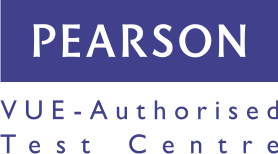Ten pięciodniowy kurs prowadzony przez instruktora przeznaczony jest dla specjalistów IT, którzy chcą rozwijać swoje umiejętności z zakresu Windows PowerShell i automatyzacji administracyjnej. Kurs zakłada podstawową wiedzę z zakresu PowerShell jako interaktywnego polecenia wiersza poleceń oraz uczy studentów poprawnych wzorców i praktyk budowania wielokrotnego użytku, ściśle zdefiniowanych jednostek automatyzacji.
Ten kurs jest przeznaczony dla administratorów w środowisku opartym na technologiach Microsoft, którzy chcą budować wielokrotnego użytku jednostki automatyzacji, automatyzować procesy biznesowe oraz umożliwić mniej technicznym kolegom wykonywanie zadań administracyjnych.
Ten moduł wyjaśnia, jak projektować narzędzia i jednostki automatyzacji zgodnie z natywnymi wzorcami użytkowania w PowerShellu.
Ten moduł wyjaśnia, jak rozpocząć proces skryptowania, zaczynając od interaktywnej konsoli powłoki.
Ten moduł wyjaśnia, jak budować podstawową funkcję i moduł, używając polecenia już eksperymentowanego w konsoli.
Ten moduł wyjaśnia, jak rozszerzyć funkcjonalność narzędzia, parametryzować wartości wejściowe i używać CmdletBinding.
Ten moduł wyjaśnia, jak tworzyć narzędzia, które produkują niestandardowe obiekty jako wyjście.
Ten moduł wyjaśnia, jak ponownie przemyśleć projektowanie narzędzi, korzystając z konkretnych przykładów, jak często jest to robione źle.
Ten moduł wyjaśnia, jak korzystać z dodatkowych potoków wyjściowych dla lepszych zachowań skryptu.
Ten moduł wyjaśnia, jak dodać pomoc opartą na komentarzach do narzędzi.
Ten moduł wyjaśnia, jak tworzyć narzędzia radzące sobie z przewidywalnymi błędami.
Ten moduł wyjaśnia, jak używać narzędzi debugowania skryptów PowerShell.
Ten moduł wyjaśnia, jak dalej definiować atrybuty parametrów w poleceniu PowerShell.
Ten moduł wyjaśnia, jak tworzyć zewnętrzną pomoc dla polecenia.
Ten moduł wyjaśnia, jak używać Pester do przeprowadzania podstawowych testów jednostkowych.
Ten moduł wyjaśnia, jak rozszerzyć obiekty o dodatkowe możliwości.
Ten moduł wyjaśnia, jak korzystać z analizatora skryptów do wspierania najlepszych praktyk i zapobiegania powszechnym problemom.
Ten moduł wyjaśnia, jak publikować narzędzia w publicznych i prywatnych repozytoriach.
Ten moduł wyjaśnia, jak tworzyć kontrolery skryptów, które wykorzystują narzędzia.
Ten moduł wyjaśnia, jak tworzyć i używać funkcji proxy.
Ten moduł wyjaśnia, jak pracować z danymi XML w PowerShellu.
Ten moduł wyjaśnia, jak korzystać z danych JSON w PowerShellu.
Ten moduł wyjaśnia, jak korzystać z serwera SQL z poziomu skryptu PowerShell.
Ten moduł daje studentom szansę wykorzystania wszystkiego, czego nauczyli się na tym kursie, w praktycznym przykładzie.
Firma jest Autoryzowanym Ośrodkiem Szkoleniowym MICROSOFT Silver Learning
Możesz u nas podejść do egzaminu Pearson VUE
Spółka posiada wpis do ewidencji placówek niepublicznych Nr ew. ES.VIII.4320-6/p.n./2003 wydany z upoważnienia Prezydenta Miasta Łodzi
 |
 |
Zachęcamy do skorzystania z możliwości dofinansowania szkoleń oferowanych przez naszą firmę. Dostępne rozwiązania:
Skontaktuj się z nami, aby uzyskać więcej informacji. Oferujemy pełne wsparcie w tym procesie.
Zapraszamy!
|
|
|
Najbliższy termin: Prosimy o kontakt
Najbliższy termin: Prosimy o kontakt
Najbliższy termin: Prosimy o kontakt
Najbliższy termin: Prosimy o kontakt
Najbliższy termin: Prosimy o kontakt
Najbliższy termin: Prosimy o kontakt
Najbliższy termin: Prosimy o kontakt
Najbliższy termin: Prosimy o kontakt
Najbliższy termin: Prosimy o kontakt
Najbliższy termin: Prosimy o kontakt
Najbliższy termin: Prosimy o kontakt
Najbliższy termin: Prosimy o kontakt
